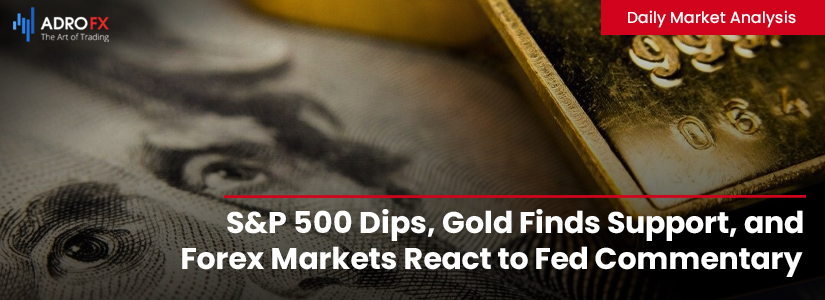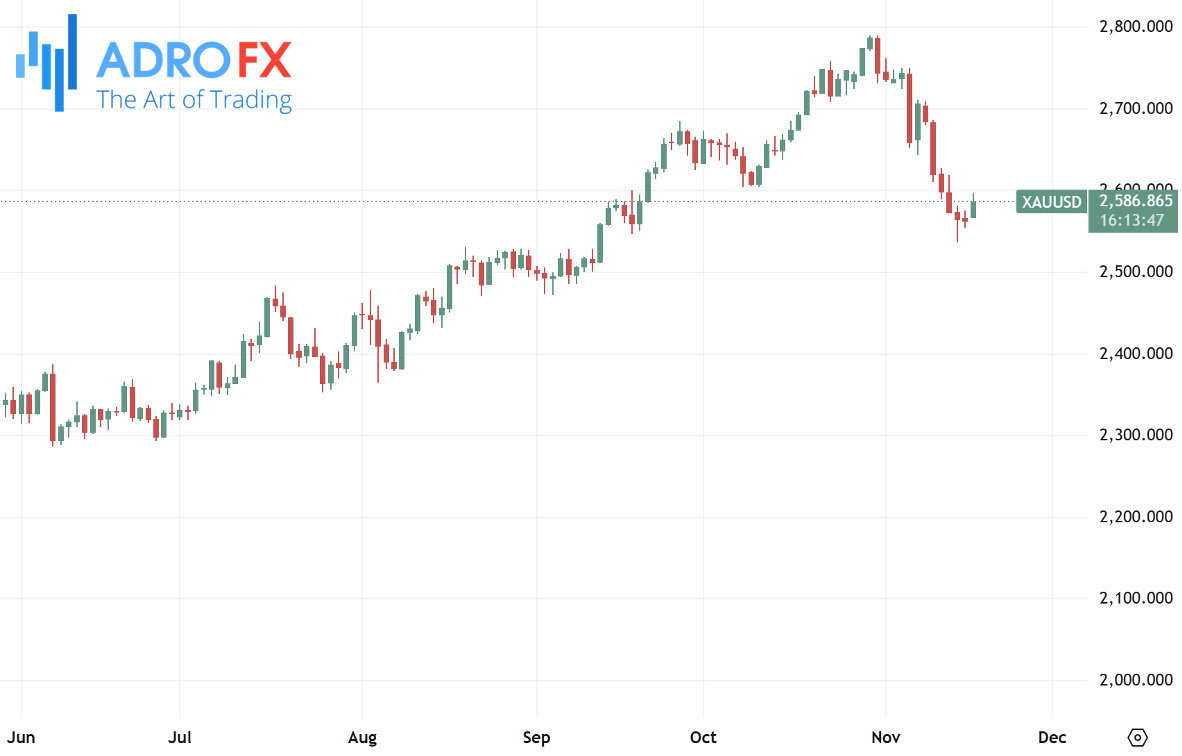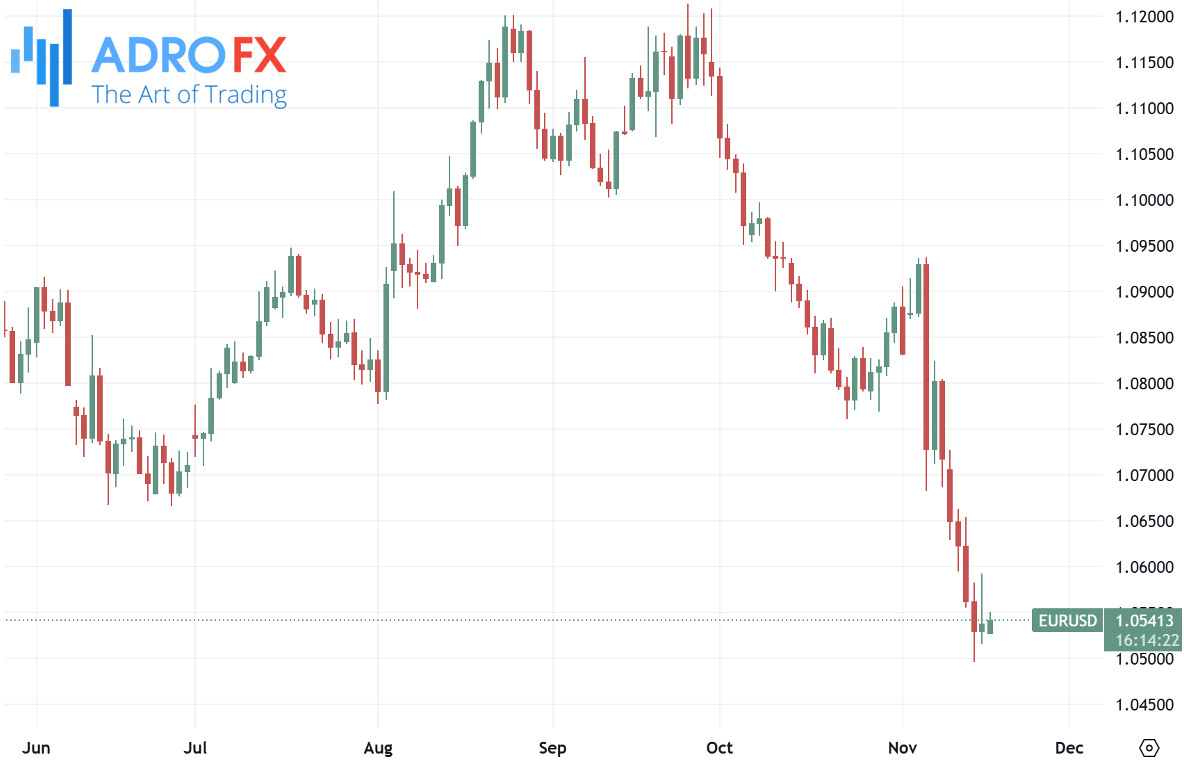S&P 500 Dips, Gold Finds Support, and Forex Markets React to Fed Commentary | Daily Market Analysis

Key events:
- Eurozone - ECB's De Guindos Speaks
- Eurozone - ECB's Lane Speaks
- Eurozone - ECB President Lagarde Speaks
The S&P 500 wrapped up the week with a notable loss on Friday, as optimism from the post-election rally faded in light of stronger-than-expected economic data. These developments raised concerns over the likelihood of fewer interest rate cuts by the Federal Reserve.
The Dow Jones Industrial Average declined by 305 points (0.7%), the S&P 500 fell 1.4%, and the tech-heavy NASDAQ Composite slid 2.3%.

Gold managed to attract safe-haven flows at the start of the new trading week, driven by heightened geopolitical tensions. The metal rebounded from a two-month low reached last Thursday, aided by subdued performance in the US Dollar. However, despite the upward movement, gold prices remain below the $2,600 threshold during the Asian session, as market participants anticipate a more cautious approach to rate cuts by the Federal Reserve.

Investors are banking on President-elect Donald Trump's fiscal policies to boost inflation, potentially limiting the scope for further Fed easing. Rising US Treasury yields, supported by these inflation expectations, continue to bolster the US Dollar, creating headwinds for non-yielding assets like gold. A sustained buying spree will be essential for XAU/USD to confirm a near-term bottom and signal the end of the corrective decline from its record highs.
The Japanese Yen pared some of its intraday losses against the US Dollar, benefiting from speculation over potential market intervention by Japanese authorities to stabilize the currency. However, the Yen’s upside remains limited amid ongoing uncertainty about the Bank of Japan’s policy direction. A robust risk appetite in global markets further weighs on the safe-haven currency.
BoJ Governor Kazuo Ueda reaffirmed on Monday that monetary tightening would continue if economic conditions align with the central bank’s forecasts.

Ueda added that while Japan’s economy shows moderate recovery, weak spots persist, and decisions on rate adjustments will hinge on future economic, price, and financial developments. Finance Minister Katsunobu Kato echoed these sentiments, emphasizing the government's close monitoring of forex markets and readiness to act against excessive volatility.
The Australian Dollar extended its gains against the US Dollar for the second consecutive session on Monday, supported by hawkish remarks from Reserve Bank of Australia Governor Michele Bullock. Bullock highlighted that interest rates are sufficiently restrictive and will remain steady until inflation is firmly under control.

Australia’s 10-year government bond yields eased to 4.66% after touching a one-year high. While October employment growth showed signs of cooling, the unemployment rate held steady, reflecting a resilient labor market. Attention now turns to the RBA’s meeting minutes, which could offer further insights into its future policy direction.
USD/CAD traded near 1.4090 during Asian trading hours, maintaining its proximity to the four-year high of 1.4105 reached last Friday. The pair's upside is underpinned by a stronger US Dollar, driven by hawkish Federal Reserve commentary.

However, the Canadian Dollar might find support from rising oil prices, buoyed by concerns over potential supply disruptions due to escalating geopolitical tensions. On the flip side, expectations of aggressive interest rate cuts by the Bank of Canada to address slowing inflation and economic struggles weigh on the loonie. Market participants await Canada’s CPI inflation report on Tuesday for more clarity on the BoC’s policy trajectory.
Meanwhile, EUR/USD hovered near its yearly low of 1.0496 during the Asian session, trading around 1.0550. Cautious comments from Fed officials and robust US retail sales data have reinforced support for the US Dollar, intensifying downside risks for the Euro.

The European Central Bank remains dovish, with a rate cut anticipated in December. Inflation in the Eurozone is forecast to drop significantly to 2.4% in 2024, down from 5.4% in 2023, before gradually easing to 2.1% in 2025 and 1.9% in 2026.
According to the European Commission’s Autumn 2024 forecast, the Eurozone economy is expected to grow by 0.8% in 2024, with growth accelerating to 1.6% by 2026. EU Economy Commissioner Paolo Gentiloni noted, “As inflation continues to ease and private consumption and investment strengthen alongside record-low unemployment, growth should gradually gain momentum over the next few years.”









